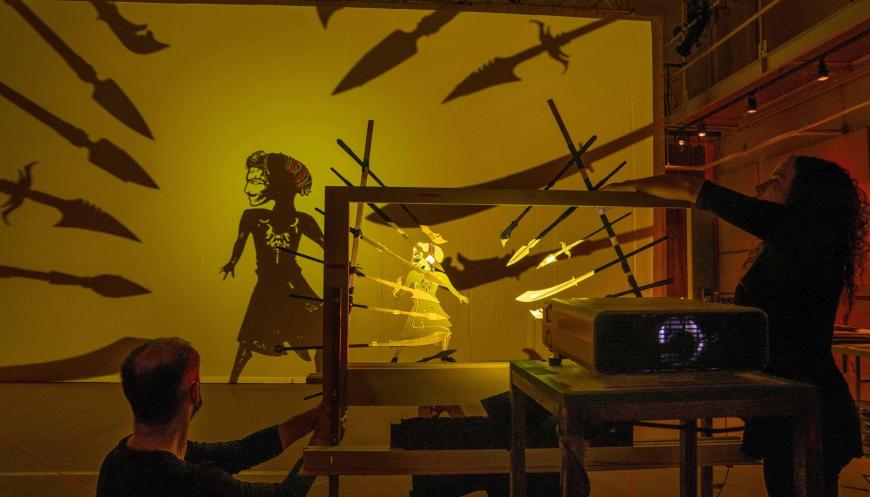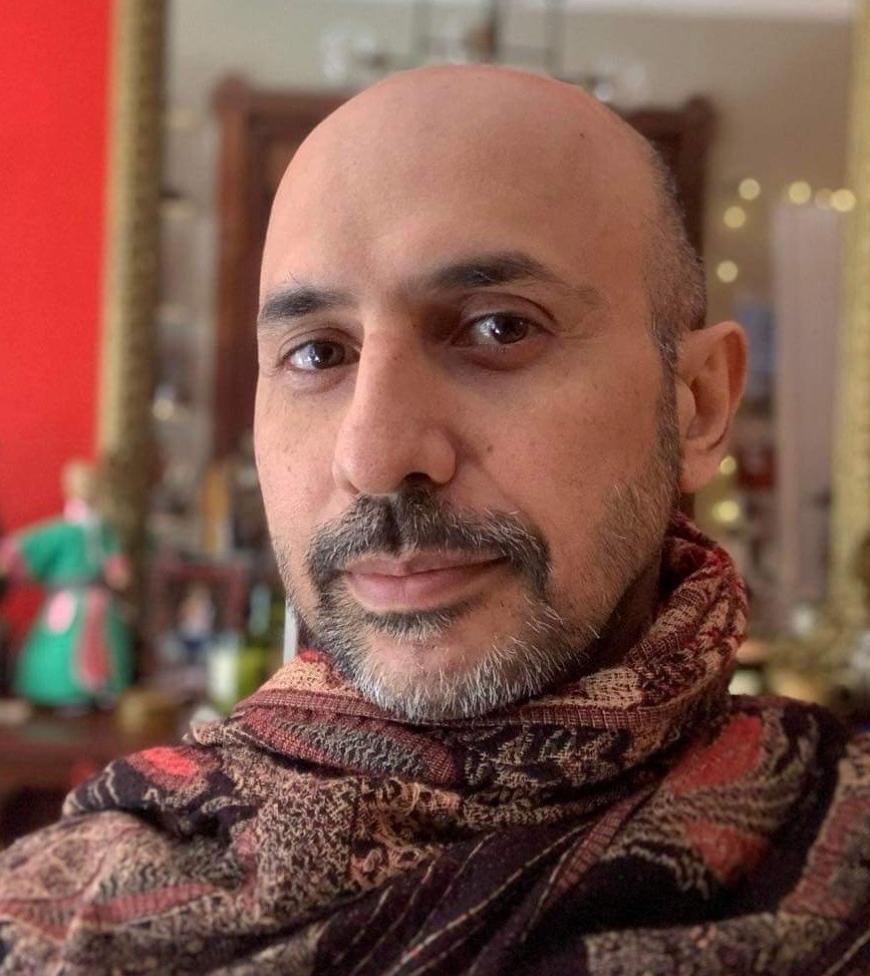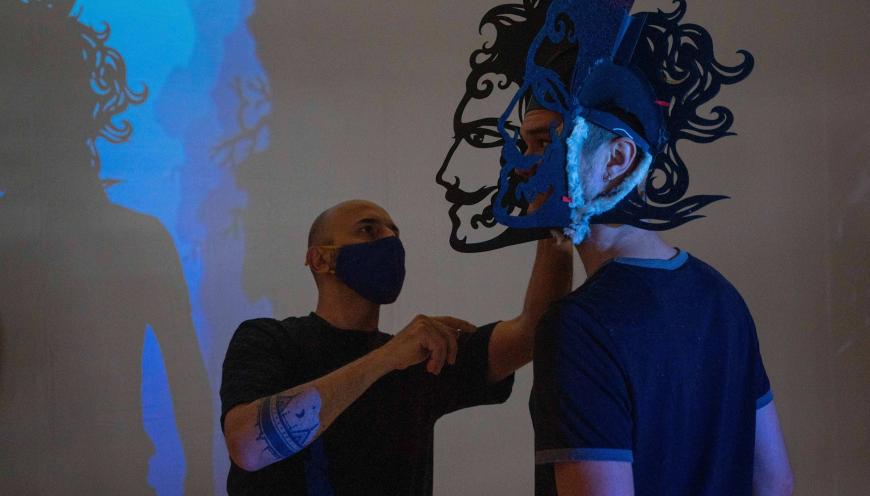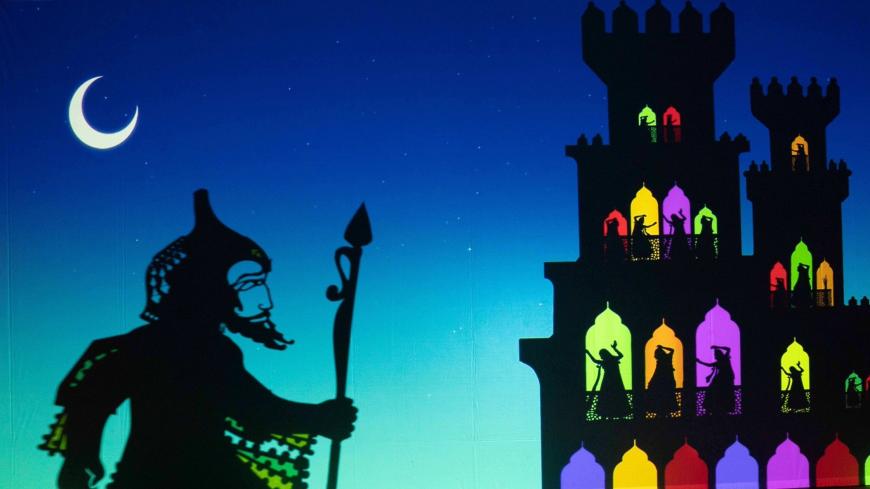
Hamid Rahmanian is an artist who would love to be known for his 16-year project to bring the Iranian national epic to a wider audience through highly acclaimed illustrated books and theater productions. He was a 2014 Guggenheim Fellow and received a 2020 United States Artists Fellowship. His artist biography and more information on his project are available at his website.
Unfortunately, his latest intricate production, Song of the North, is generating publicity for a sad reason. On Oct. 23, after the show finished its run in San Francisco, Rahmanian discovered that the U-Haul truck containing the entire physical production had been stolen. When police located the truck, Rahmanian was horrified to discover the contents had been removed and vandalized.

“We went to the parking lot where the truck was towed, myself and a couple of friends, and it was ravaged,” Rahmanian reported. “They tore apart everything like animals — so much loss, all the electronics, all the puppets, the costumes. Some of the devices that we built for this show to work the way it does — the show is not like a regular puppet show — every five minutes, we were like, ‘Oh my god, this one’s missing, that one’s missing.’
“Overall, it would take us a few months to recover, and some things [specific to the production] I have to come up with another way [to do] because the show looks like a movie. From the audience point of view, you’re watching a movie, but on the stage, we are making that movie. So there is a lot of technology involved.”
The show took Rahmanian and his partner Melissa Hibbard, a film producer and one of the founders of the nonprofit ArteEast, three years to write and create and cost several hundred thousand dollars, collected from grants and donations. It has 15 stage performers and a score written and orchestrated by Loga Ramin Torkian that features vocalist Azam Ali. It premiered in Paris in 2022 and later played at the Brooklyn Academy of Music. The current tour is supposed to continue in Chicago in January 2024, with dates in Virginia, Pennsylvania, and Los Angeles (April 5–7, 2024, at the Freud Playhouse) to follow.
Getting to those places intact, however, will be the tricky part. For now, Rahmanian has returned to Brooklyn to set up what he’s calling a “puppet hospital” in his studio. He’s also put together a GoFundMe page for donations to help him rebuild and recover as much as he can. He’s determined to take the show to Chicago in just a couple of months.

As the artist explained, the entire multiyear project, which now encompasses five theatrical productions, all based on Shahnameh (or The Book of Kings), came about “because I migrated to the United States. And I felt that I needed to create something that would highlight Iranian culture [because] you constantly hear about a politicized Iran.” To counter the West’s view of Iran as a political enemy, Rahmanian strives “to shed a bright light into Iranian culture. Iran is like a symphony where you only hear one note.”
Iran, he says, “is a poetry-obsessed society.” And a lot of that is due to Ferdowsi of Tus’s Shahnameh — at 50,000 couplets, the longest epic poem written by a single poet. Ferdowsi took the fall of the Samanid Persian Empire hard, and in his epic, written between 977 and 1010, he tried to preserve as much of traditional Persian culture as he could. And according to Rahmanian, the poet was spectacularly successful at that.
“It kept the Persian language alive,” Rahmanian explained, “because unlike many North African and Middle Eastern states that lost the [original local] language to Arabic [during the 7th- and 8th-century conquests], Iranians kept their language alive because of this book.”

He continued: “So it’s something that connects the pre-Islamic era and today. This is maybe the only epic tradition or mythology that is still in conversation with its own people. In Iran, people are still using the mythology for its characters and customs, which are all kept in this book, to create slogans, moments — in many different ways. It’s a very alive piece of literature for Iranians.”
One of Rahmanian’s previous productions, which appeared in Silkroad Ensemble’s 2019 concert tour “Heroes Take Their Stands,” was reviewed in SF Classical Voice, with Jeff Kaliss reporting:
The Prince of Sorrows, the closing offering, was both the most spectacular and the most effective in storytelling, about a 10th-century Persian prince’s persistence in moral, spiritual, and humanitarian rightness. It was composed by kamancheh player [Kayhan] Kalhor, whose recorded musical ensemble included Persian tombak drums and nay, a transverse flute, as well as vocals. Kalhor was partnered by fellow Iranian expatriate filmmaker and visual artist Hamid Rahmanian, who deployed projections of enlarged, floating Persian calligraphy, as well as dazzlingly colored illustrations which seemed to reach the audience in three or four dimensions.”
Rahmanian reports that he is plotting an expansion of that show. But first, he has puppet triage to do and a January deadline to meet.



